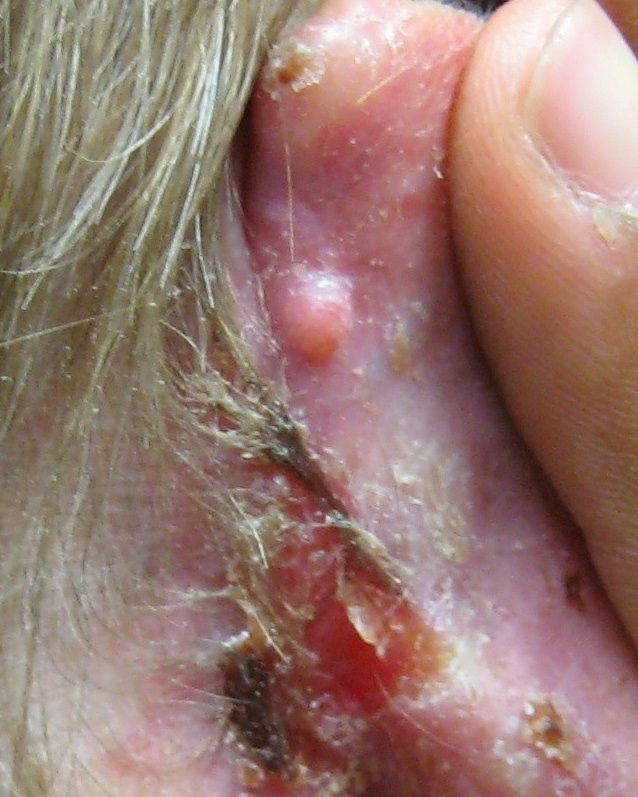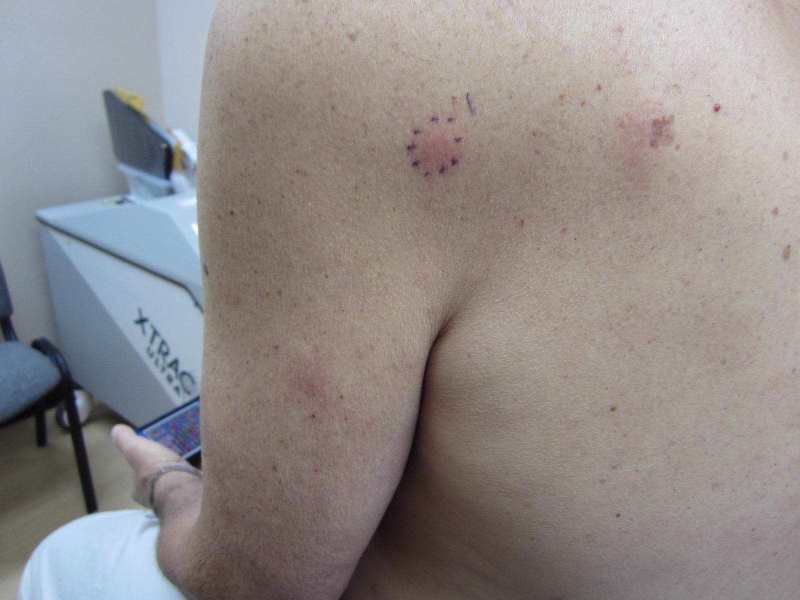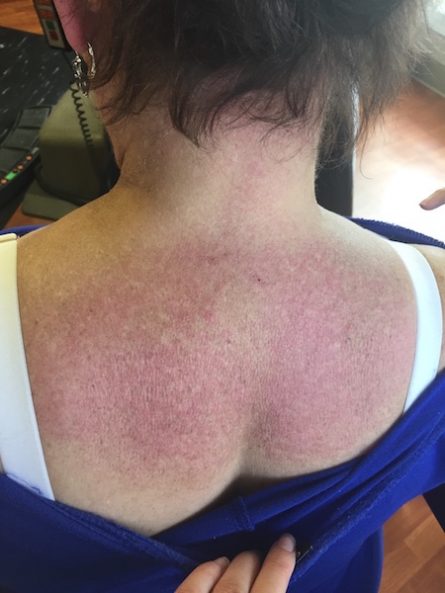CORRECT DIAGNOSIS:
Cutaneous Cryptococcosis
DISCUSSION:
Cryptococcosis is caused by the opportunistic mycosis cryptococcus neoformans. Cutaneous cryptococcosis may result from primary inoculation or from pulmonary dissemination. The latter, secondary form of cutaneous cryptococcosis commonly results from inhalation of pigeon droppings and, although may occur in immunocompetent hosts, is more common in immunocompromised patients, particularly those with AIDS. The diagnosis of primary cutaneous cryptococcosis should be made only after a thorough workup for systemic disease.
Cutaneous features vary from ulcerations to cellulitis, as well as molluscum contagiosum-like lesions. Diagnosis is made by histopathologic evaluation of lesions that demonstrate characteristic capsulated yeasts. Mucicarmine or alcian blue are used to highlight the capsule as well as India ink which is used to evaluate CSF preparations in cases of cryptococcal meningitis. The disseminated disease carries a poor prognosis and is frequently fatal.
The suspicion for cutaneous cryptococcus in this particular case was low when taking into account the close clinical resemblance and the patient’s strong history of non-melanoma skin cancers. It would have been reasonable to assume the patient had a BCC or SCC and to perform a wide excision or Mohs rather than begin the correct treatment with oral antifungals. This case demonstrates the importance of preventing patient demands from taking precedent over proper diagnostic and treatment plans. Even though we must take into account the patient’s financial and social needs, we must not deviate from the standard of care. Although indicated and highly suspicious in this case, our patient refused an immunocompromise workup as well as a workup for systemic cryptococcosis.
TREATMENT:
Treatment for primary cutaneous cryptococcus is an oral antifungal medication, most commonly fluconazole, which is also used as prophylaxis in immunocompromised patients. Surgical excision of small, localized lesions may also be performed in conjunction with antifungal treatment.
REFERENCES:
Christianson, J. C., Engber, W., & Andes, D. (2003). Primary cutaneous cryptococcosis in immunocompetent and immunocompromised hosts. Medical Mycology, 41(3), 177-188. PMID: 12814148
Hontanilla, B., Ruiz de Erenchun, R., Toledo, G., & Idoate, M. (2001). Primary cutaneous cryptococcosis in an immunocompetent patient: Surgical management. Annals of Plastic Surgery, 47(6), 683-684. PMID: 11799355
Micalizzi, C., Persi, A., & Parodi, A. (1997). Primary cutaneous cryptococcosis in an immunocompetent pigeon keeper. Clinical & Experimental Dermatology, 22(4), 195-197. PMID: 9272990
Revenga, F., Paricio, J. F., Merino, F. J., Nebreda, T., Ramirez, T., & Martinez, A. M. (2002). Primary cutaneous cryptococcosis in an immunocompetent host: Case report and review of the literature. Dermatology, 204(2), 145-149. PMID: 11926902
Vijaya, D., et al. (2001). Disseminated cutaneous cryptococcosis in an immunocompetent host. Mycoses, 44, 113. PMID: 11328601
Yao, Z., et al. (2005). Management of cryptococcosis in non-HIV-related patients. Medical Mycology, 43, 245. PMID: 15816484




